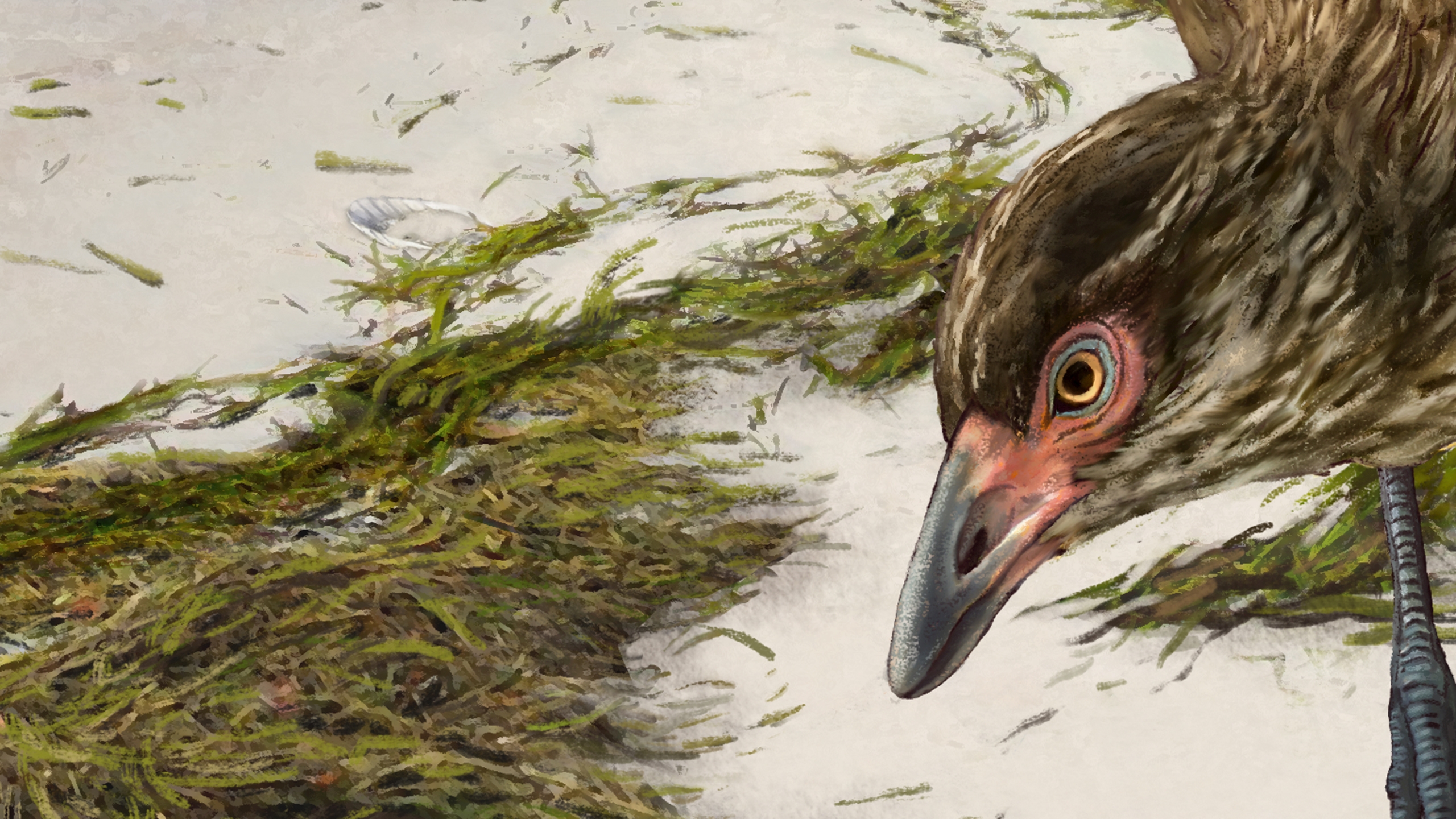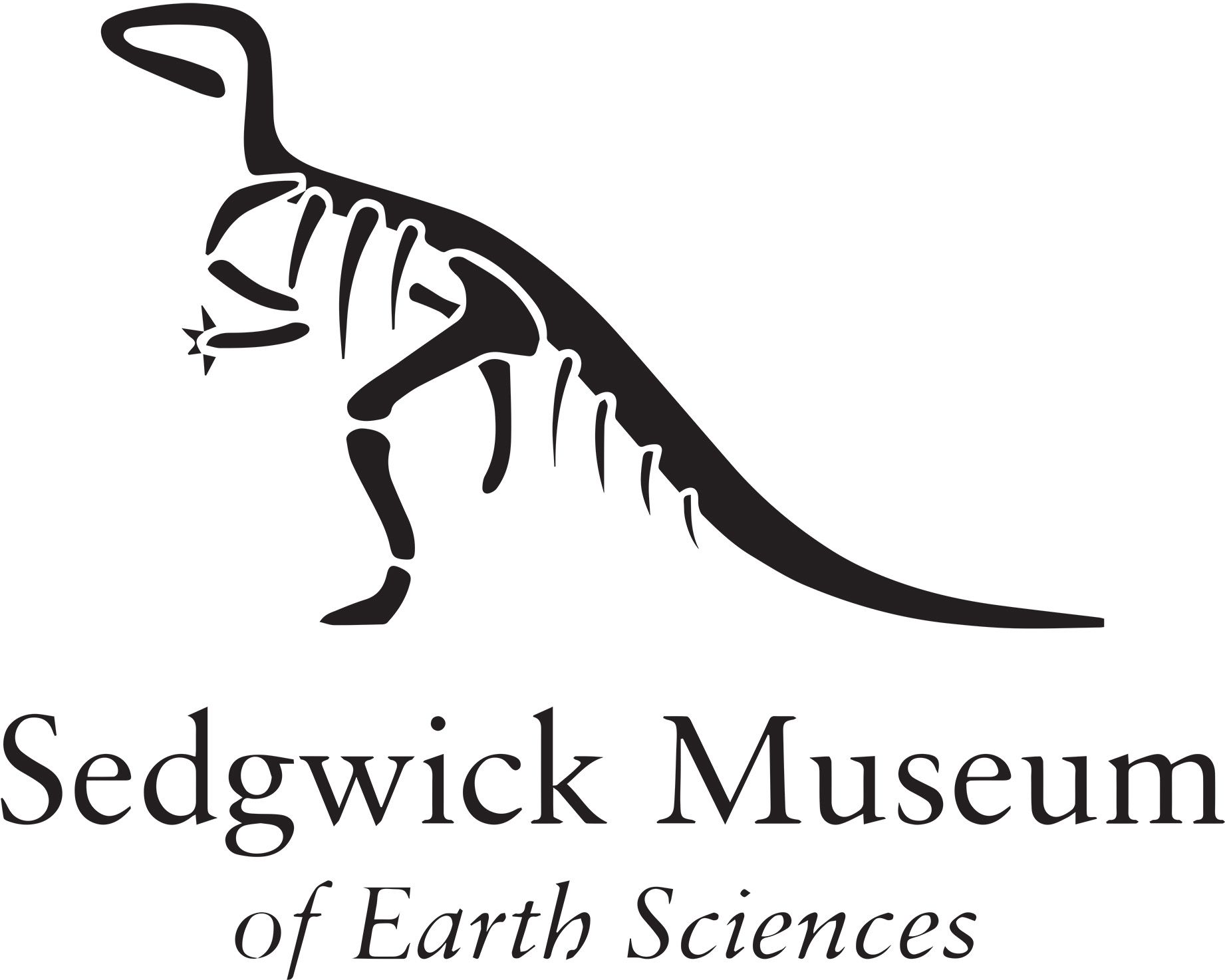Dawn of the Wonderchicken
The oldest modern bird
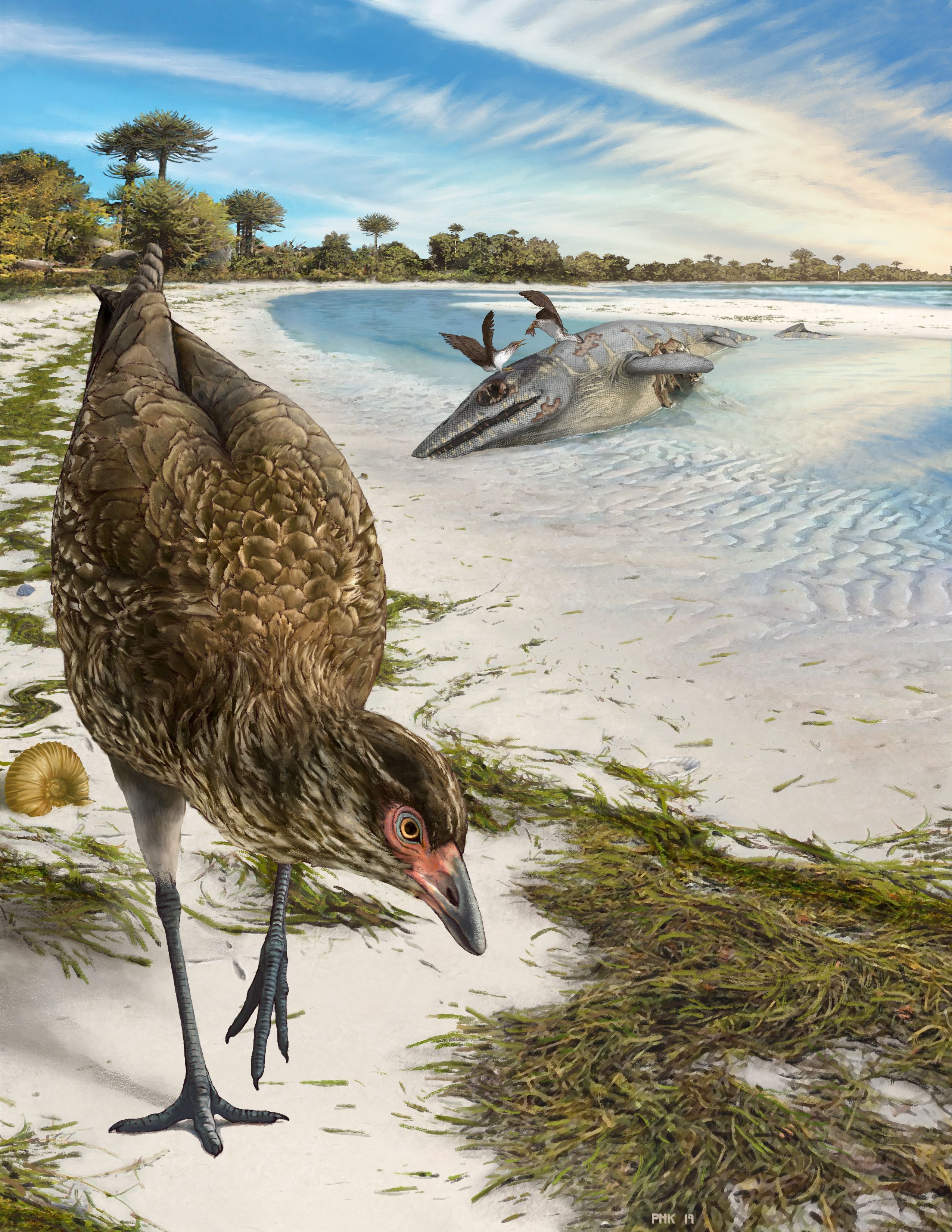
Asteriornis maastrichtensis, affectionately known as the Wonderchicken, is among the most exciting bird fossils ever found. It has one of the best-preserved fossil bird skulls in the world, and gives us important insights into the evolutionary origins of modern birds.
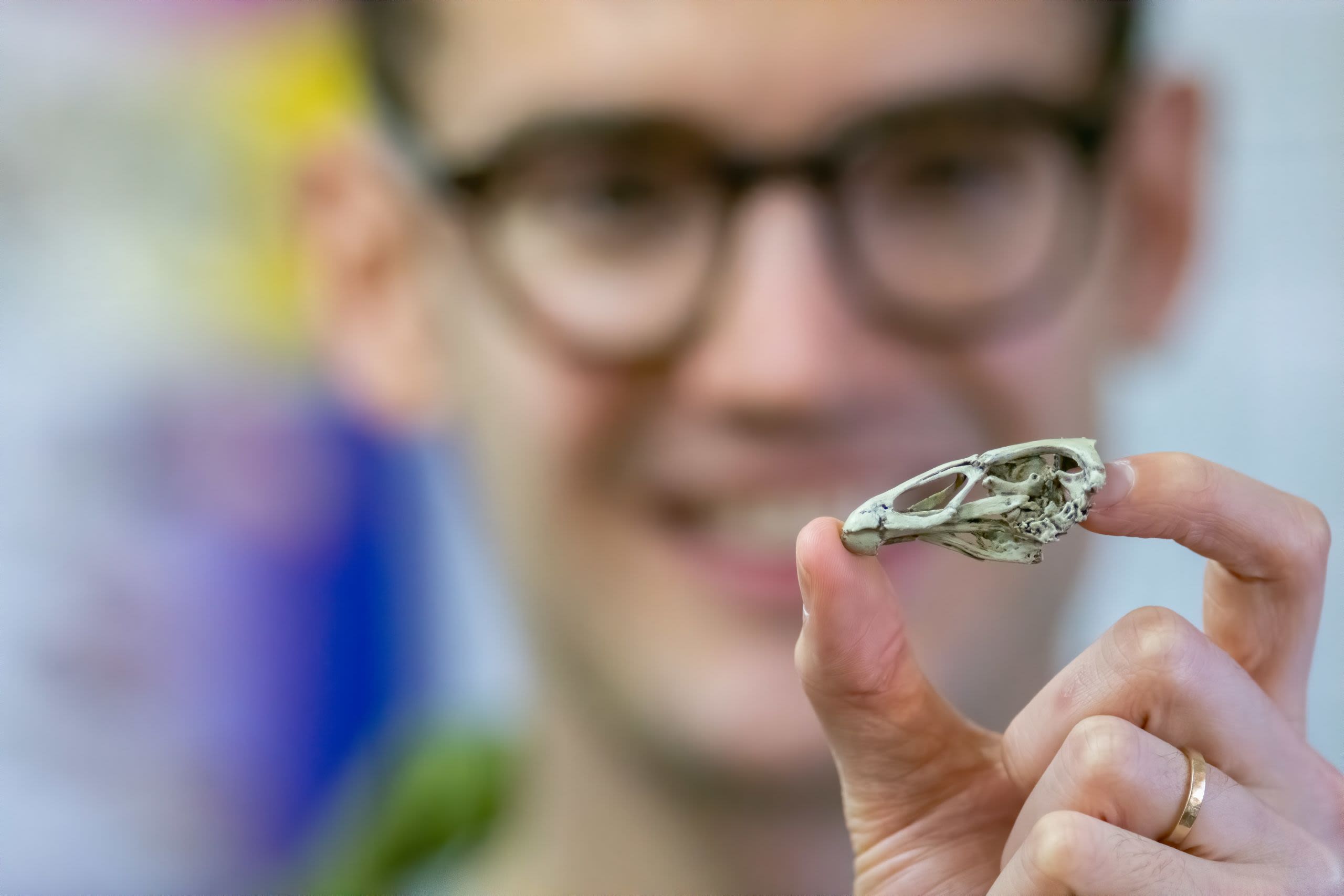
Dr Daniel Field holding a 3D printed replica of the skull. Photo by Jenny Hanna.
Dr Daniel Field holding a 3D printed replica of the skull. Photo by Jenny Hanna.
The Wonderchicken was discovered and named by Dr Daniel Field, Juan Benito, and Albert Chen from the Department of Earth Sciences at the University of Cambridge, along with their collaborators Dr John Jagt and Dr Daniel Ksepka.
They have published this work in the March 2020 issue of the prestigious journal Nature.
You can read the paper here
The scientific name Asteriornis comes from Asteria, the Greek Titan goddess of falling stars. She is an appropriate namesake, as the fossil comes from rocks just one million years older than the asteroid impact that eliminated the non-avian dinosaurs 66.02 million years ago, at the end of the Cretaceous Period.
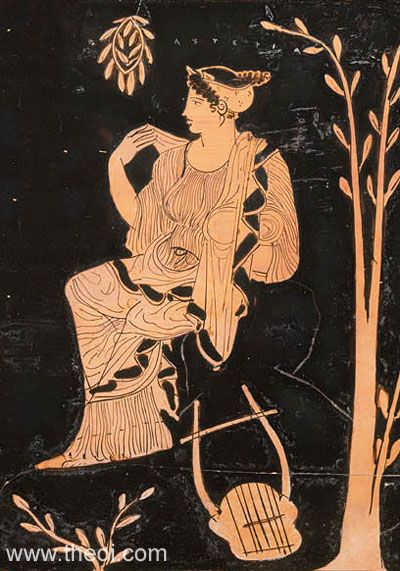
An image of Asteria
An image of Asteria
In Greek mythology, Asteria transforms herself into a quail. Daniel and his team believe Asteriornis was close to the common ancestor of the group that today includes quails, along with other chicken-like and duck-like birds. So, in a way, birds like Asteriornis did indeed transform into quails and many other birds, just like the fossil’s namesake.
A bird from the Age of Dinosaurs

A reconstruction of Asteriornis maastrichtensis © Phillip Krzeminski 2019
A reconstruction of Asteriornis maastrichtensis © Phillip Krzeminski 2019
The new fossil dates to the very end of the Cretaceous Period—the final 700 thousand years of the Age of Dinosaurs. It gives us an important glimpse of how birds looked 66.7 million years ago, during the narrow interval of time just before a giant asteroid struck the Earth.
The fossil comes from a quarry in Belgium near the village of Eben-Emael, just across the border from Maastricht in the Netherlands. The chalk rocks, known as the 'Type Maastrichtian', are the official international reference for rocks from the end of the Age of Dinosaurs.
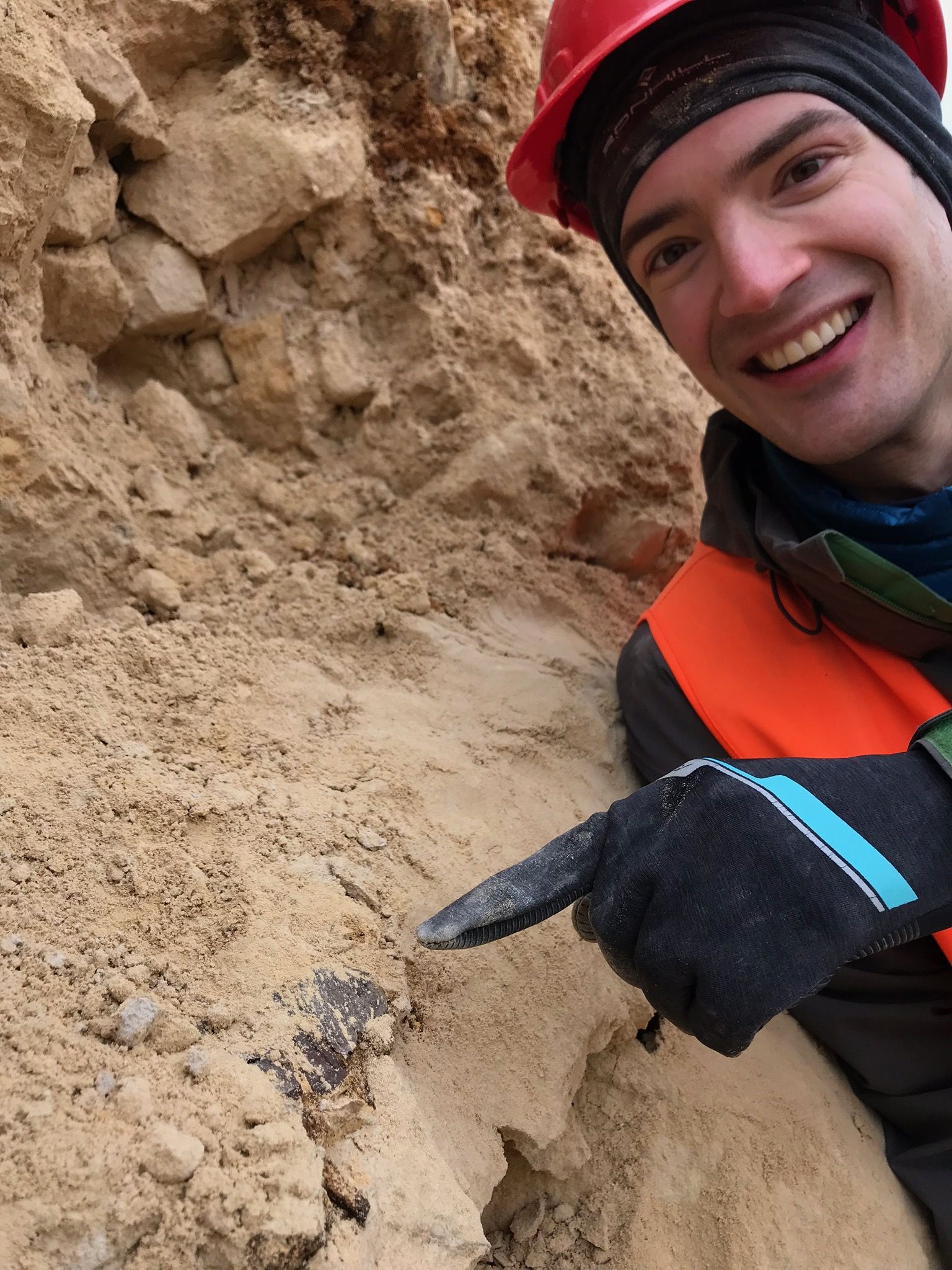
Dr Daniel Field looking for fossils in the Type Maastrichtian in Eben-Emael, Belgium. Photo by Johan Vellekoop.
Dr Daniel Field looking for fossils in the Type Maastrichtian in Eben-Emael, Belgium. Photo by Johan Vellekoop.
Most fossils found with Asteriornis are the remains of marine creatures such as sea urchins and oysters, along with extinct squid-like belemnites and mosasaurs—huge marine reptiles that went extinct with the giant dinosaurs.
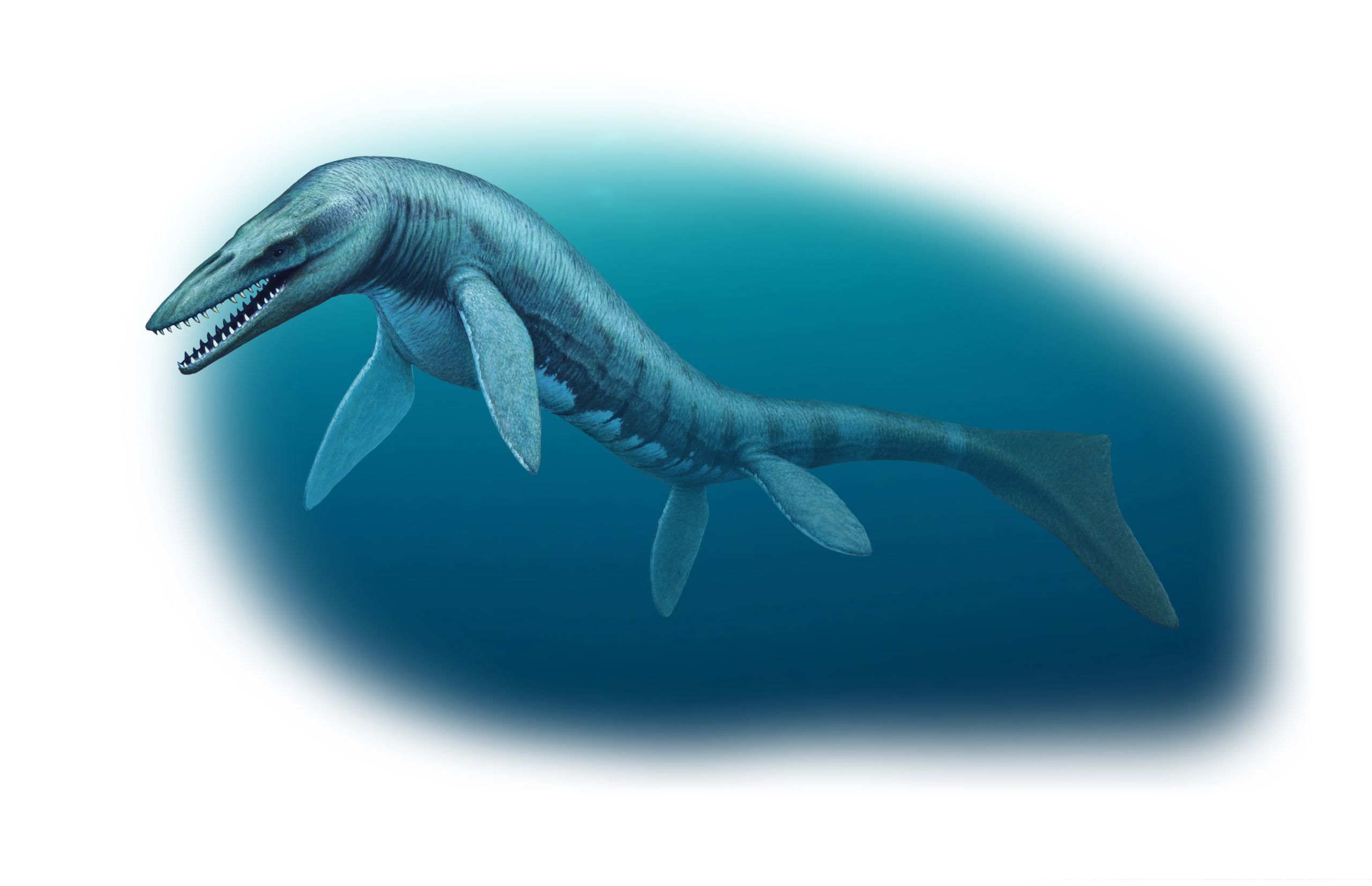
Mosasaurus hoffmanni reconstruction © Robert Nicholls 2012
Mosasaurus hoffmanni reconstruction © Robert Nicholls 2012
The rocks in which Asteriornis was found formed close to the shore of a shallow sea, in an environment similar to the present-day tropical shores of the Bahamas, when the Earth was much warmer than it is today.

Revealing the skull
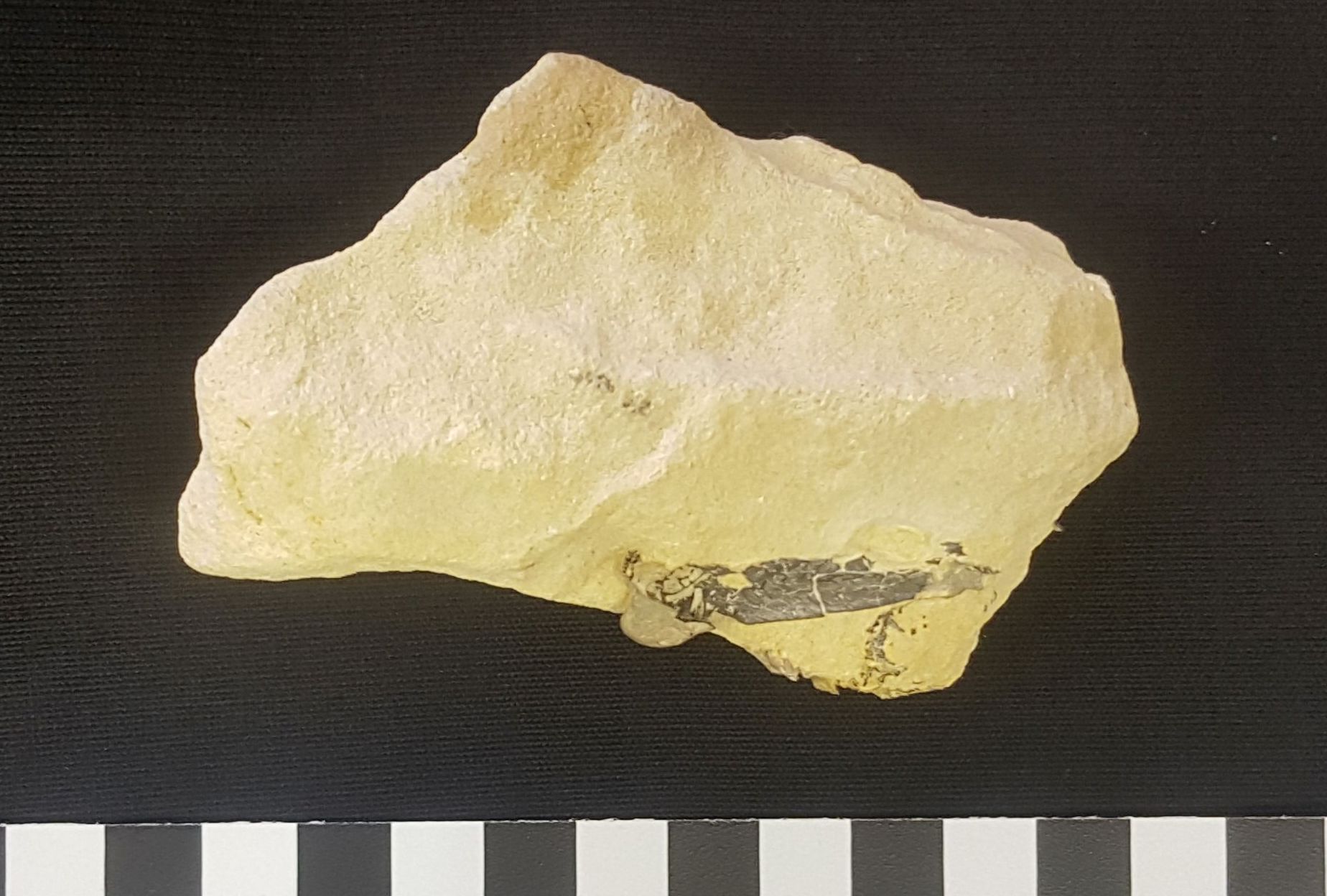
The piece of rock containing the skull, with a broken limb bone exposed.
The piece of rock containing the skull, with a broken limb bone exposed.
The piece of rock containing the skull had originally been found in 2000 by Maarten van Dinther, a Dutch healthcare worker and fossil hunter. He had donated it to the Natuurhistorisch Museum in Maastricht in the Netherlands. But the bones were not studied until 2018, when the curator of the museum, Dr John Jagt, shared them with Daniel.
In 2018, Daniel Field and his PhD student Juan Benito made an amazing discovery. They were using high-resolution microCT scanning at the Cambridge Biotomography Centre to study this specimen. They could already see some broken limb bones poking out, but to their surprise, the scan revealed a complete skull hidden within the rock.
‘It was an astonishing moment when the image of the skull appeared on the screen’ said Daniel. ‘We knew straight away that we had found a new and important bird species’.
One of the world’s finest fossil bird skulls
It is extremely rare to find complete 3D fossil bird skulls, because they are very delicate and are easily crushed during fossilisation. The Wonderchicken skull is so well preserved because it is still encased by rock. Daniel and Juan used CT scanning to visualise the skull without damaging it. Only the very back of the skull is missing, so we can reconstruct the shape of the Wonderchicken’s face with confidence.
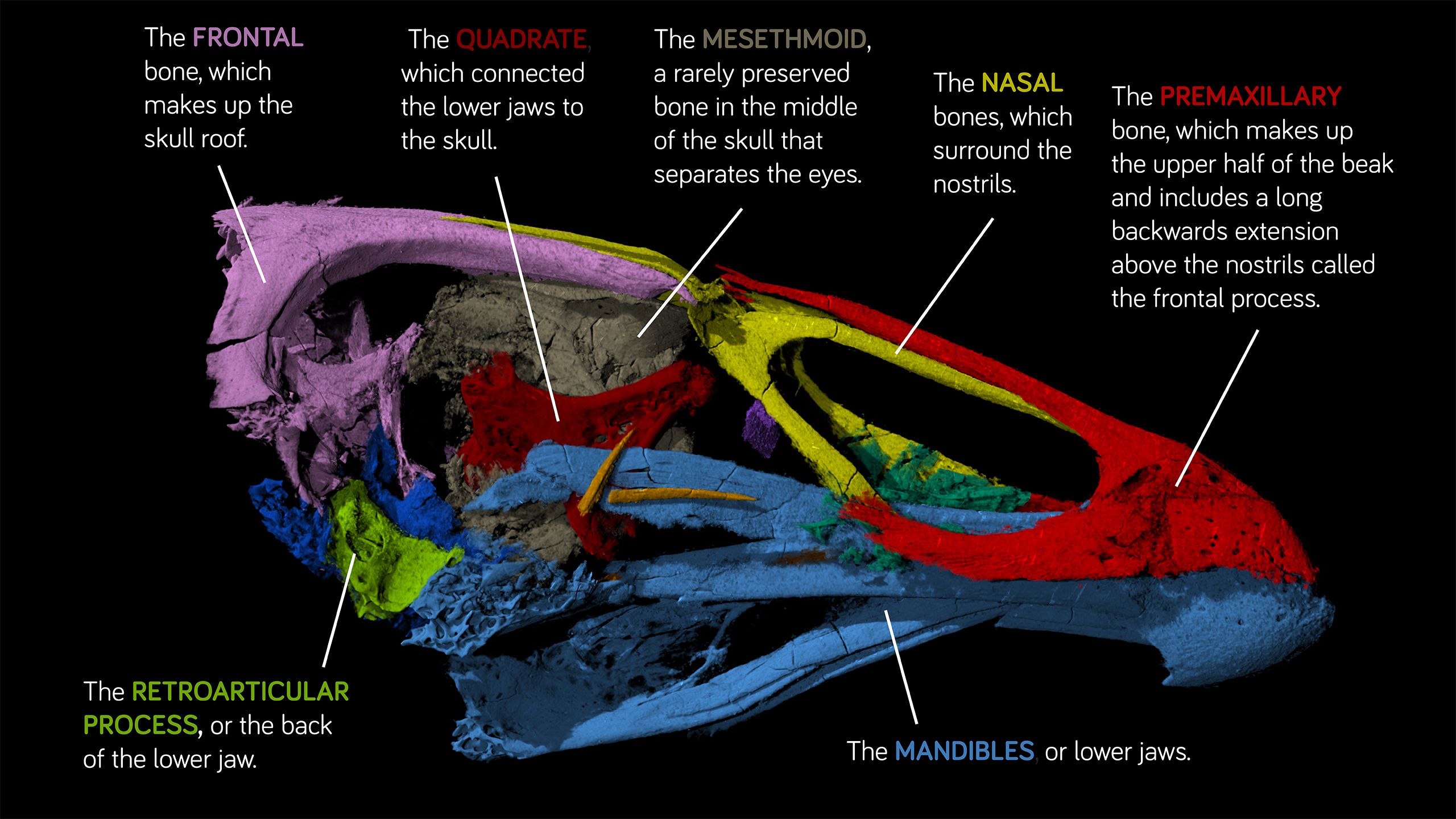
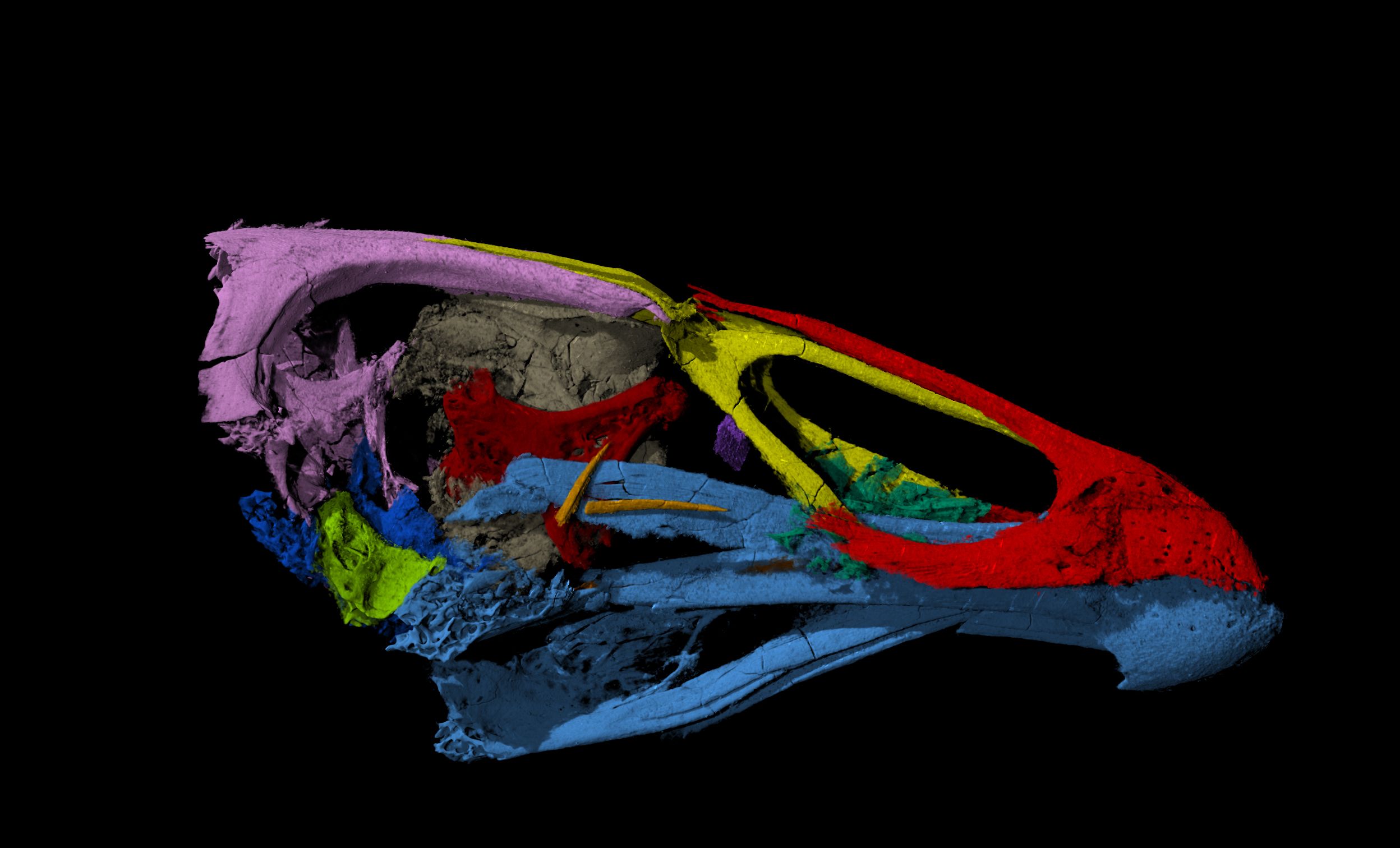
An important evolutionary link
Daniel and his colleagues compared hundreds of anatomical features of the Wonderchicken with those of major groups of living birds. They found that the Wonderchicken is close to the common ancestor of duck-like birds and chicken-like birds.

The Wonderchicken’s position on the bird family tree. It branches off the lineage that gave rise to duck-like and chicken-like birds.
The Wonderchicken’s position on the bird family tree. It branches off the lineage that gave rise to duck-like and chicken-like birds.
The duck group
Anseriformes
This group includes ducks, geese and swans. It also includes an unusual group of birds from South America called screamers.

The chicken group
Galliformes
This group includes familiar species like chickens, turkeys and partridges, as well as guineafowl, quails, guans and moundbuilders.


The roof of the skull, in pink, and the back of the lower jaw, in green, are extremely similar to those of living duck-like birds.
The shape of the nasal bones, in yellow, and premaxillary bones, in red, are extremely similar to chicken-like birds.
What the Wonderchicken looked like
Reconstructing the appearance of a long-extinct animal like Asteriornis is challenging: nobody was around 66.7 million-years-ago to see it alive. We can gather clues about how it would have looked by examining fossils and by comparing it with its living relatives.

© Phillip Krzeminski 2019
© Phillip Krzeminski 2019
Daniel used the dimensions of the Wonderchicken’s leg bones to estimate that it was a small member of the duck and chicken group, weighing about 394 grams. This is almost exactly the same size as a male Green-winged teal—one of the smallest ducks on Earth—or a mid-sized partridge.
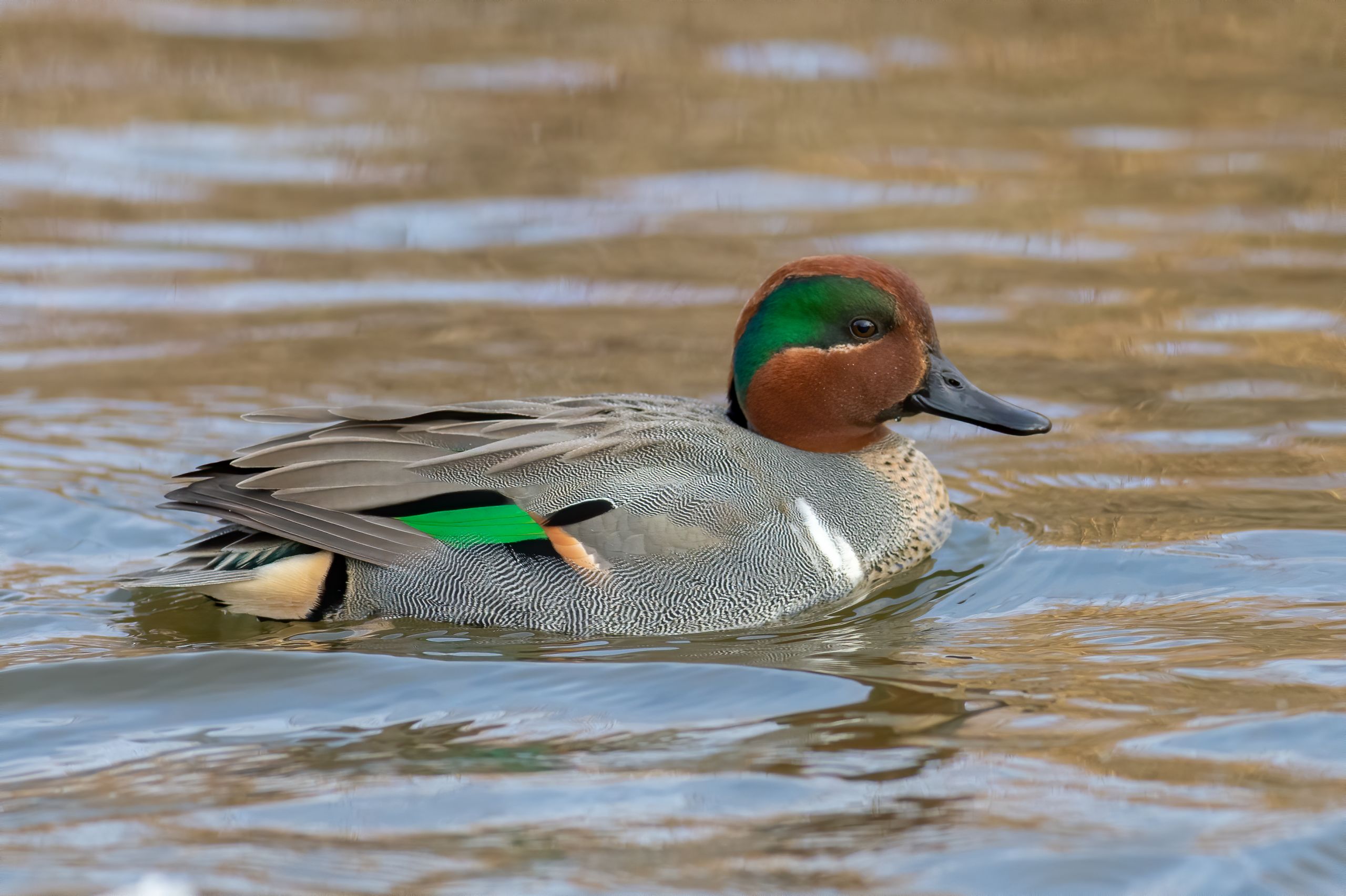
Green-winged teal (Anas carolinensis)
Green-winged teal (Anas carolinensis)
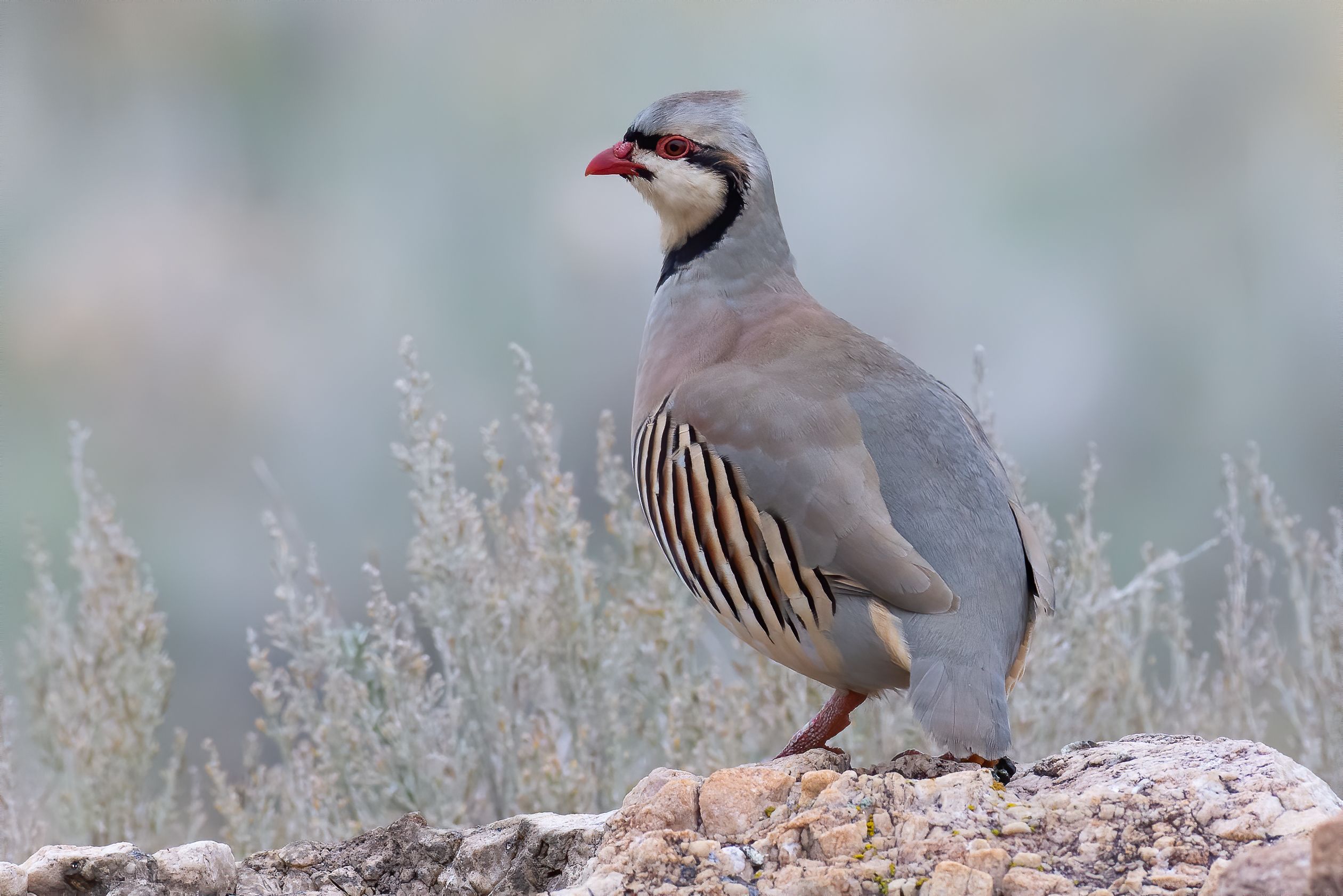
Chukar (Alectoris chukar)
Chukar (Alectoris chukar)
Asteriornis almost certainly would have been able to fly, like almost all living Galloanserae.
The skull
The skull is very well preserved, so we can confidently reconstruct Asteriornis’ head. We know that its bill was slightly flattened. It also had very large nostrils and a fairly narrow roof of the skull.
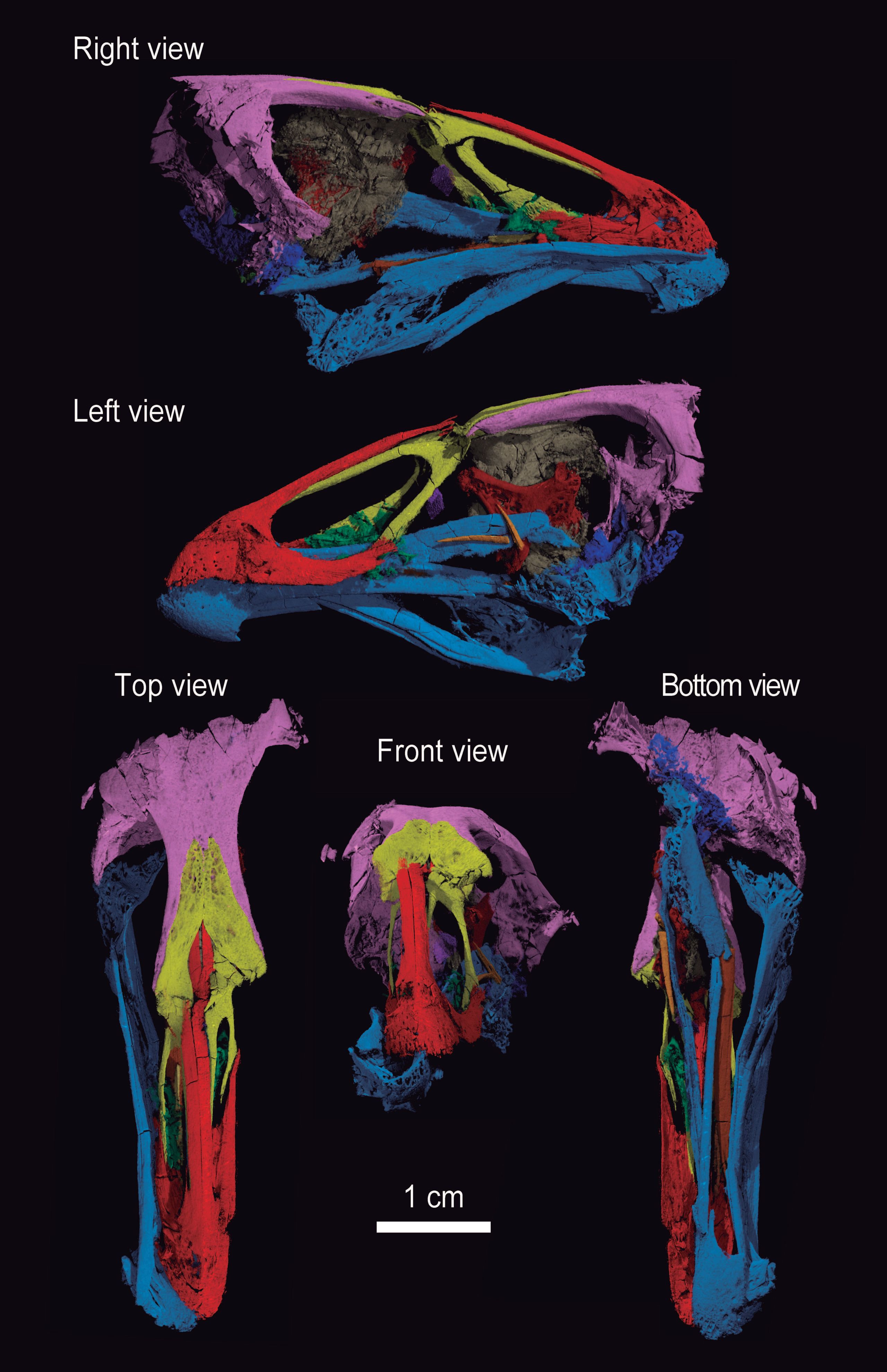
Face pattern
Although no traces of skin or feathers are preserved, we think that Asteriornis may have had a bare face patch with brightly coloured skin. This is because key living species that are closely related to Asteriornis show this pattern. Guans are one of the most ancient lineages of chicken-like birds, and many living guans show this pattern. Screamers are one of the most ancient lineages of duck-like birds, and also have a similar bare skin patch on the face.

Asteriornis maastrichtensis © Phillip Krzeminski 2019
Asteriornis maastrichtensis © Phillip Krzeminski 2019
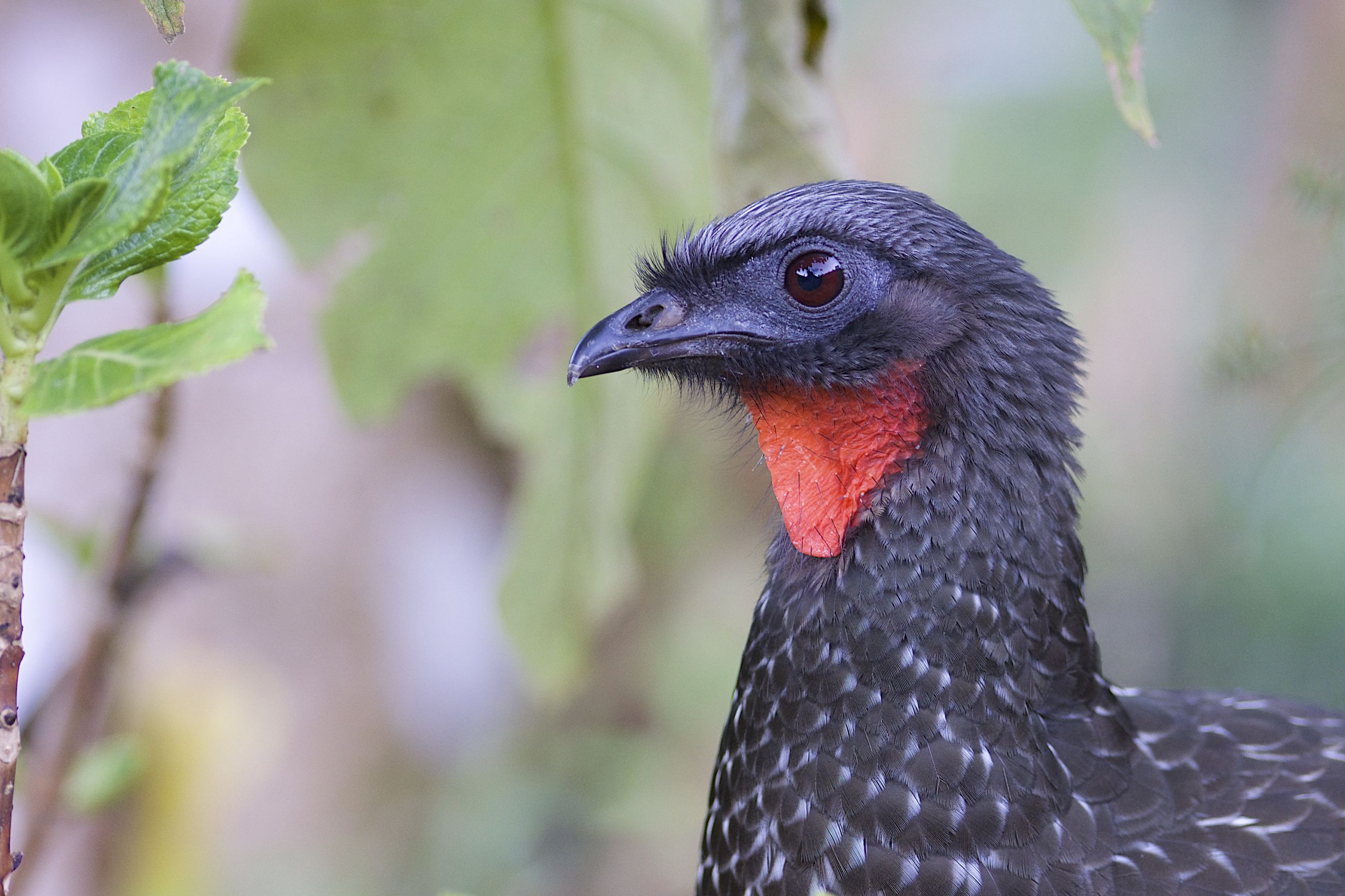
Dusky-legged guan (Penelope obscura)
Dusky-legged guan (Penelope obscura)
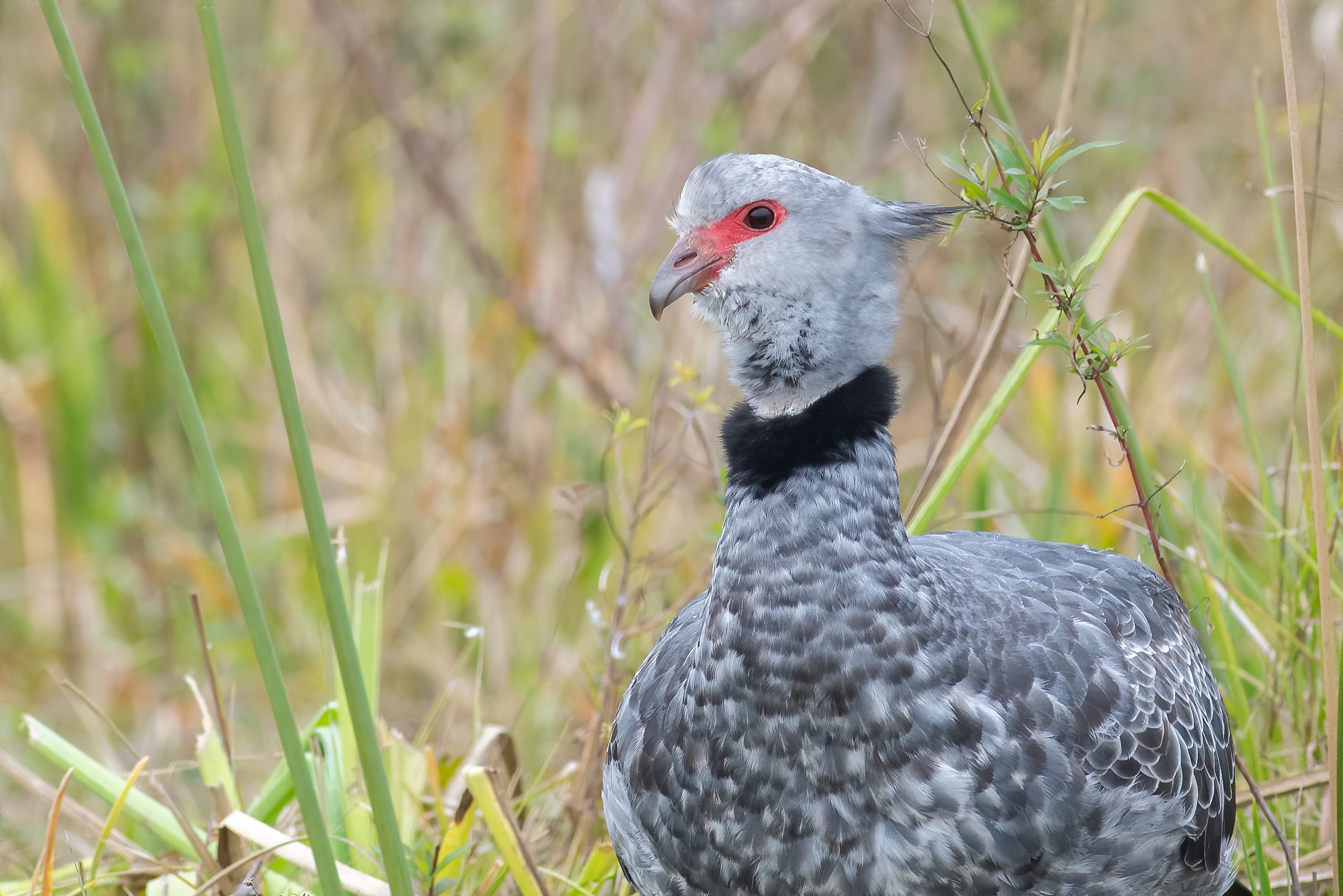
Southern screamer (Chauna torquata)
Southern screamer (Chauna torquata)
Legs
The three major leg bones are preserved along with the skull, allowing us to reconstruct the Wonderchicken’s hindlimb proportions. They suggest that its legs were fairly long, which is typical of birds that spend most of their lives on the ground. The Wonderchicken was found in rocks near an ancient shoreline, so we think that it may have lived in a similar way to living wading birds, like sandpipers.
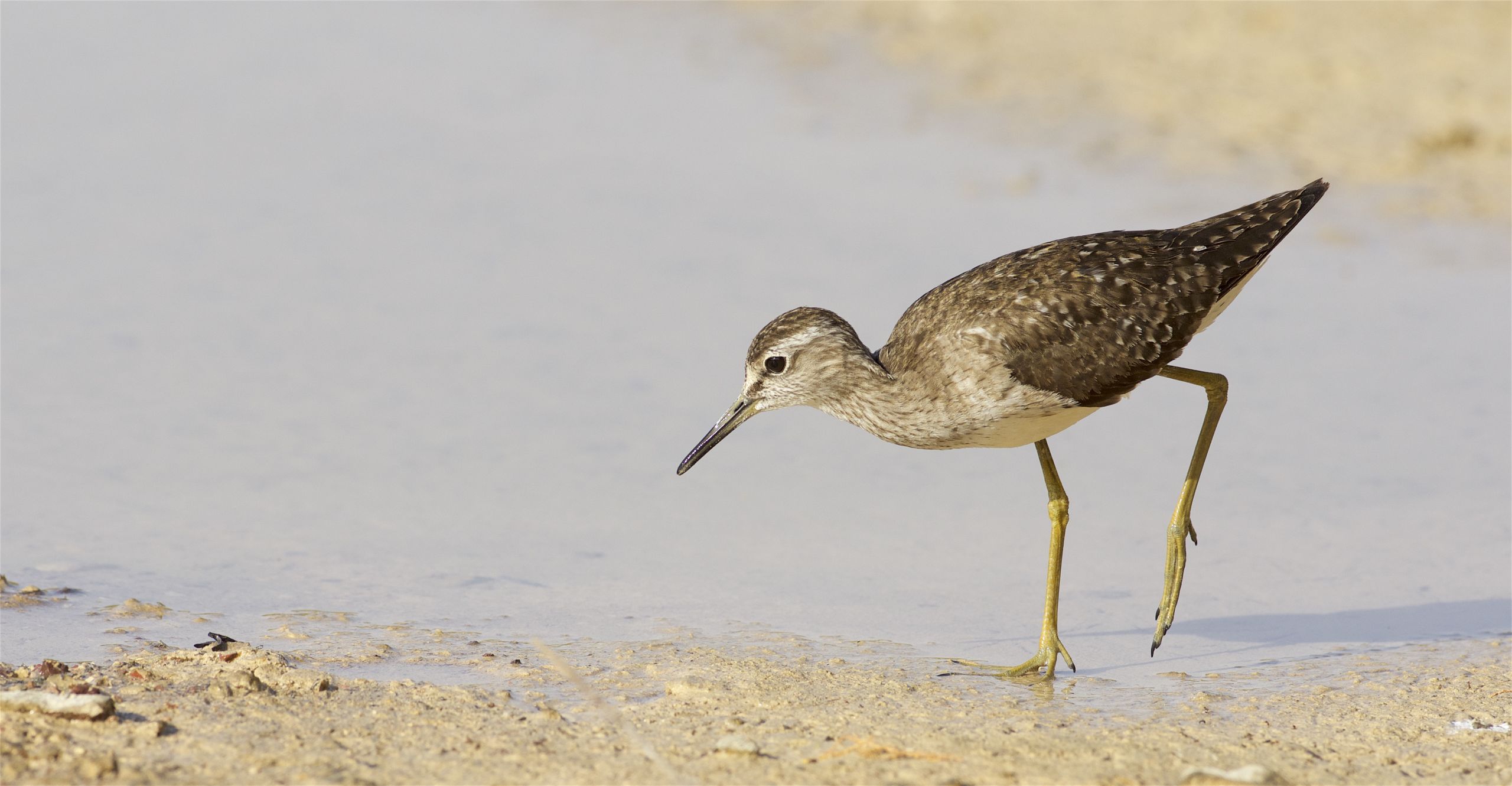
Wood sandpiper (Tringa glareola)
Wood sandpiper (Tringa glareola)
Feathers
No feathers are preserved, so we have based the plumage of Asteriornis in the reconstruction on its possible shorebird-like lifestyle, and references to living duck-like and chicken-like birds.
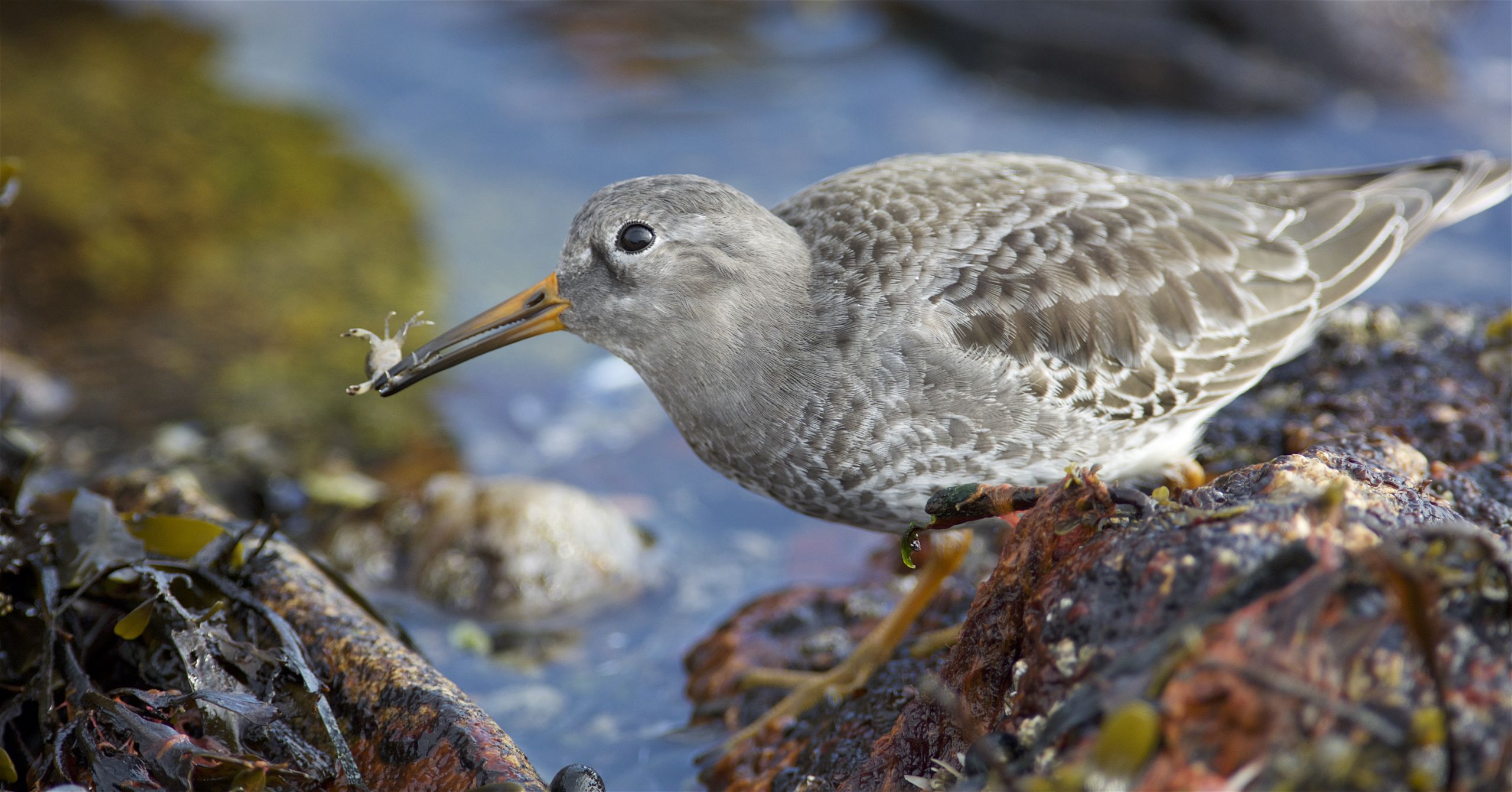
Purple sandpiper (Calidris maritima)
Purple sandpiper (Calidris maritima)
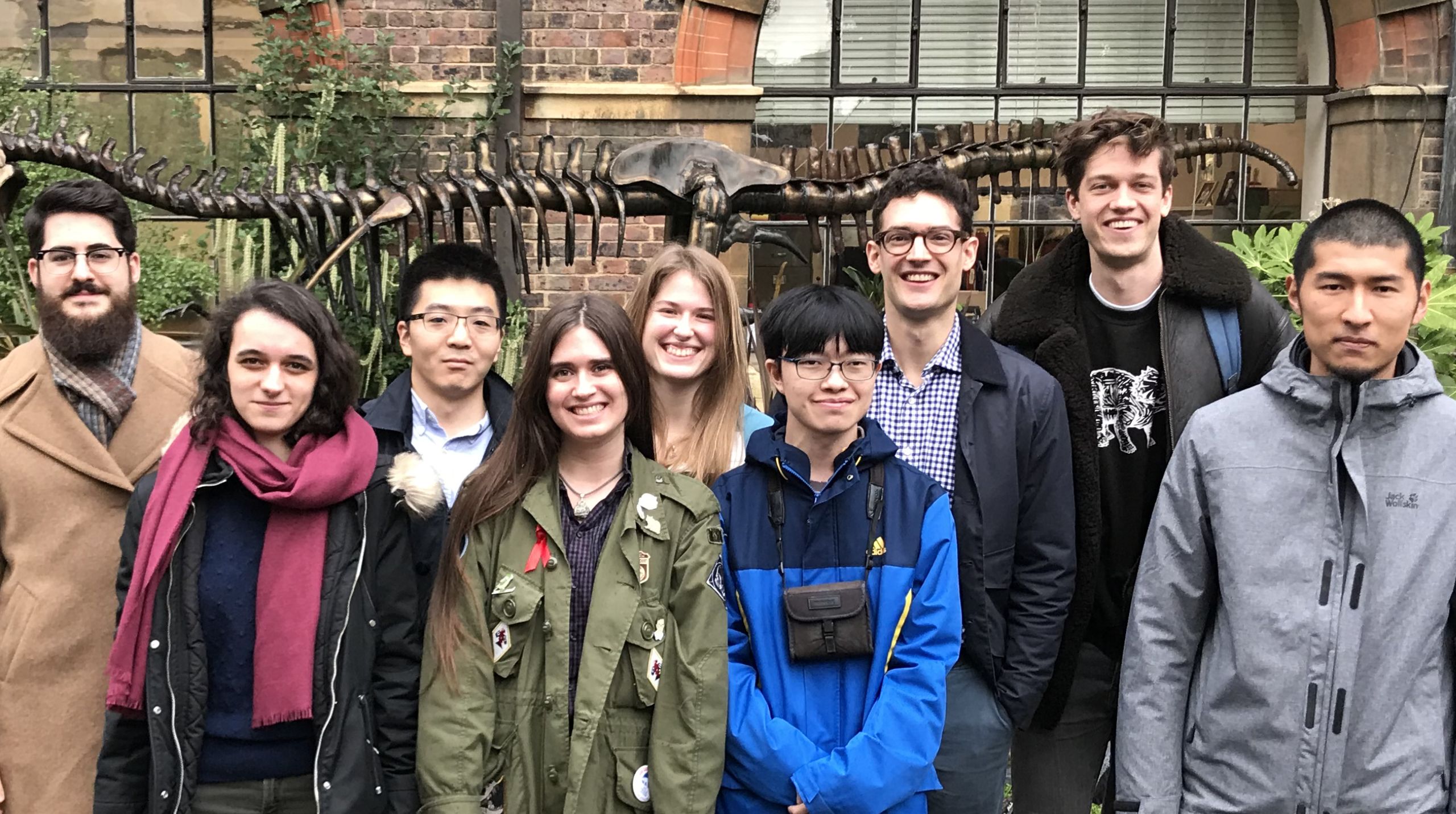
An international research team
Daniel's research group focuses on understanding the evolution of birds by exploring the fossil record.
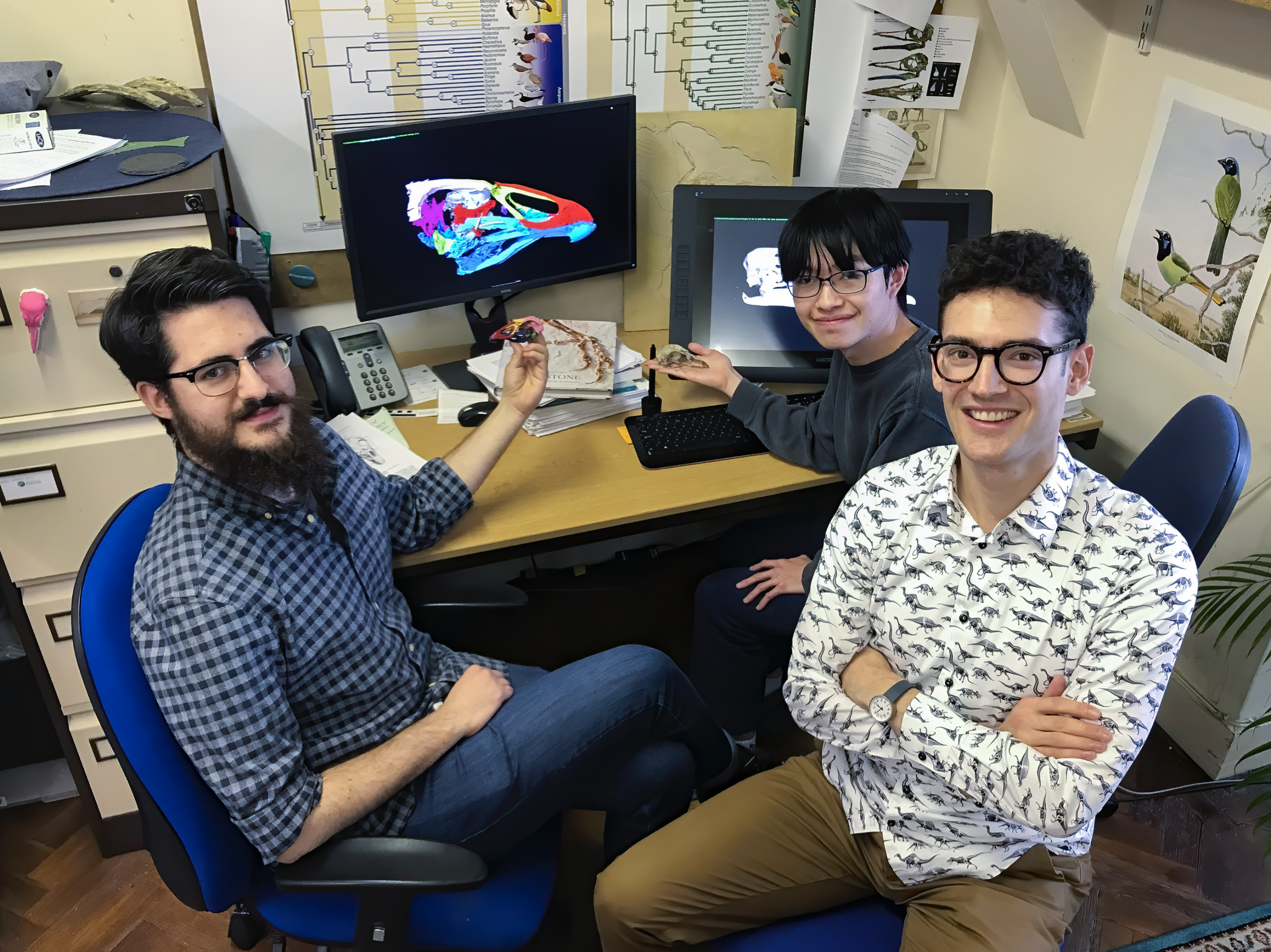
Dr Daniel Field (right) is a lecturer in the Department of Earth Sciences at Cambridge. He worked with PhD students Juan Benito (left) and Albert Chen (back) to reveal the Wonderchicken.
Dr Daniel Field (right) is a lecturer in the Department of Earth Sciences at Cambridge. He worked with PhD students Juan Benito (left) and Albert Chen (back) to reveal the Wonderchicken.

The Field Palaeobiology Research Group: (L-R ) Juan Benito (PhD Student, Spain), Garance Robin (Master's Student, France), Pei-Chen Kuo (PhD Student, Taiwan), Klara Widrig (Master's Student, USA), Lizzy Steel (PhD Student, Great Britain), Albert Chen (PhD Student, USA), Dr Daniel Field (Group Leader, Canada), Kit Baker (Master's Student, Great Britain), Dr Junya Watanabe (Postdoctoral Fellow, Japan)
The Field Palaeobiology Research Group: (L-R ) Juan Benito (PhD Student, Spain), Garance Robin (Master's Student, France), Pei-Chen Kuo (PhD Student, Taiwan), Klara Widrig (Master's Student, USA), Lizzy Steel (PhD Student, Great Britain), Albert Chen (PhD Student, USA), Dr Daniel Field (Group Leader, Canada), Kit Baker (Master's Student, Great Britain), Dr Junya Watanabe (Postdoctoral Fellow, Japan)
Dr Daniel Ksepka from the Bruce Museum, in Connecticut, USA, contributed his extensive knowledge of the bird fossil record to the study of the Wonderchicken.

Dr John Jagt, of the Natuurhistorisch Museum Maastricht provided detailed information about the age of the fossil and where it was found.

Artist Phillip Krzeminski worked closely with the team to create the painting of the Wonderchicken. He used the team’s research to guide the painting, as well as other information about the environment and animals that lived at the same time.
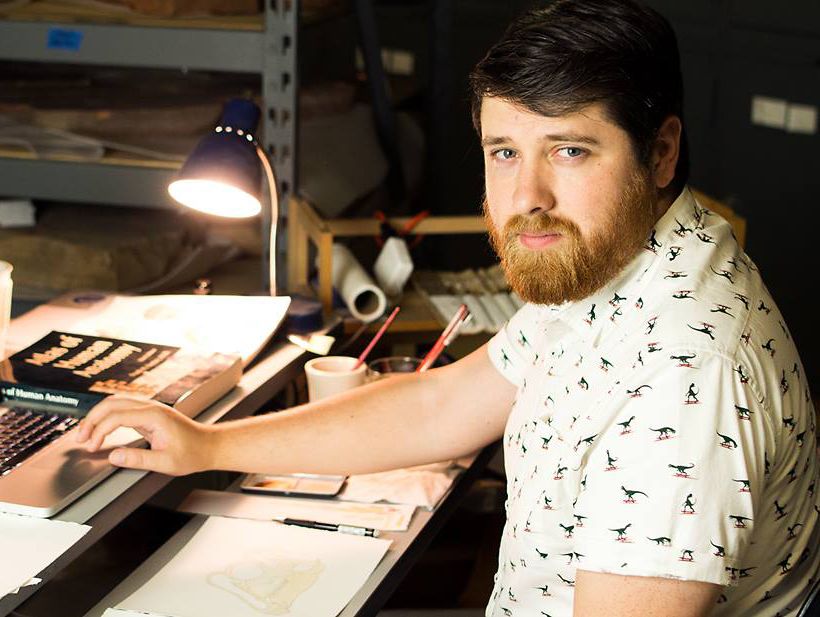

Wonderchicken and the evolution of birds
Asteriornis, the Wonderchicken, is the best example of a very early modern bird fossil. It clarifies our understanding of modern birds, which now make up almost 11,000 living species:
The earliest modern birds lived at the same time as the latest non-avian dinosaurs, such as Triceratops and Tyrannosaurus rex, just before the asteroid hit.
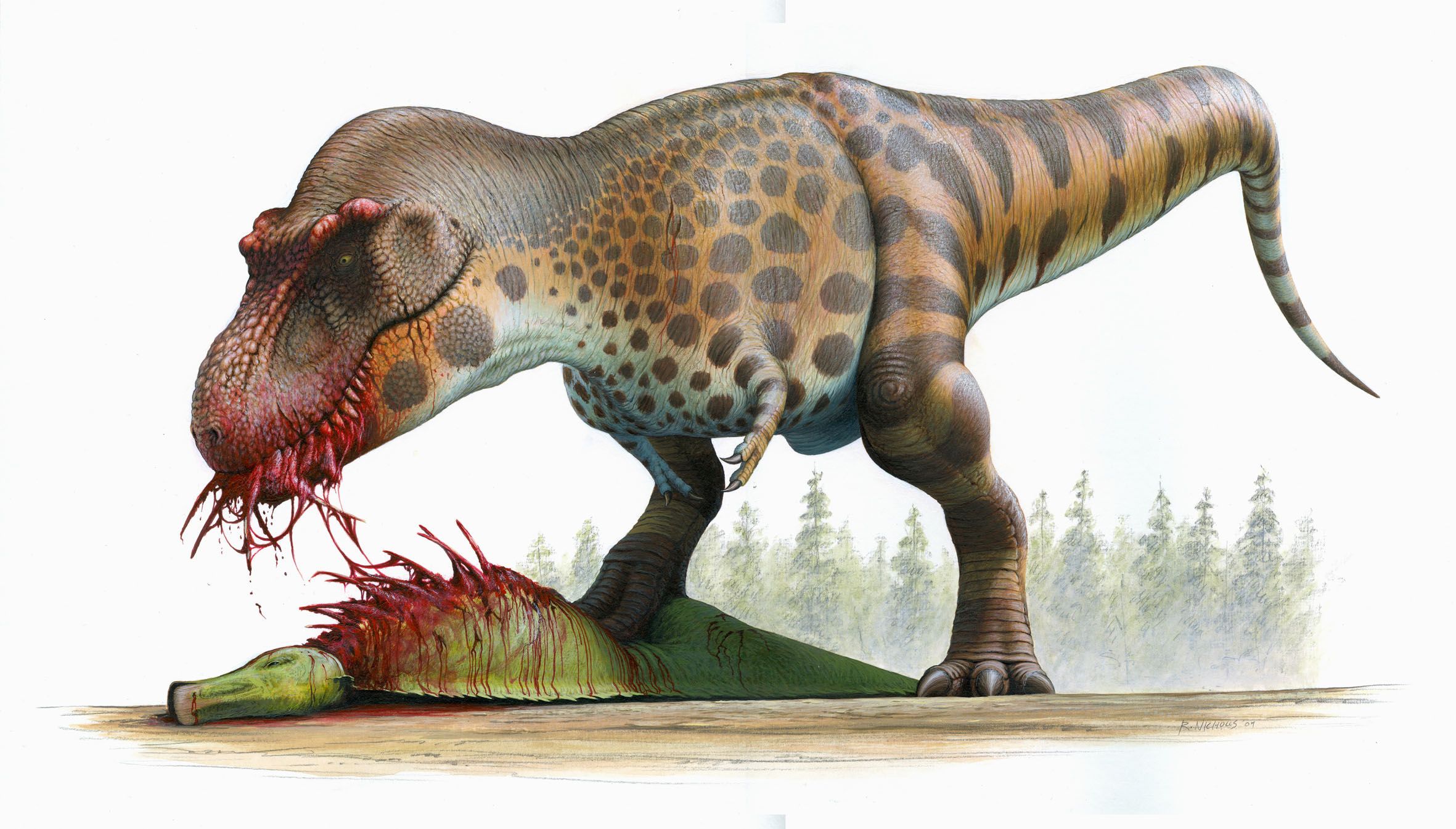
Tyrannosaurus rex reconstruction © Robert Nicholls 2009
Tyrannosaurus rex reconstruction © Robert Nicholls 2009
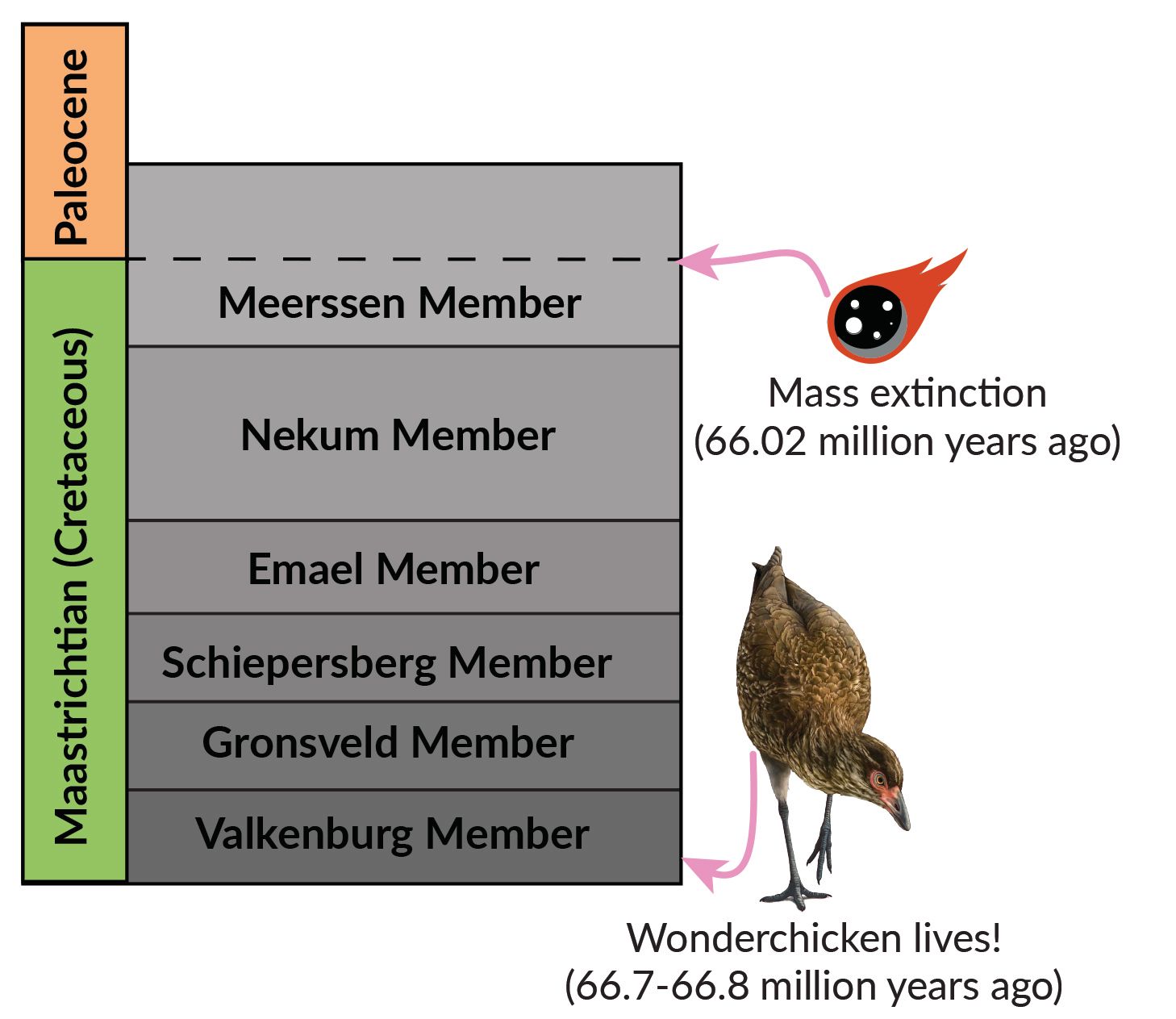
Asteriornis had a chicken-like beak and a duck-like skull - a never-before-seen combination of features. It is close to the last common ancestor of these two groups of birds.
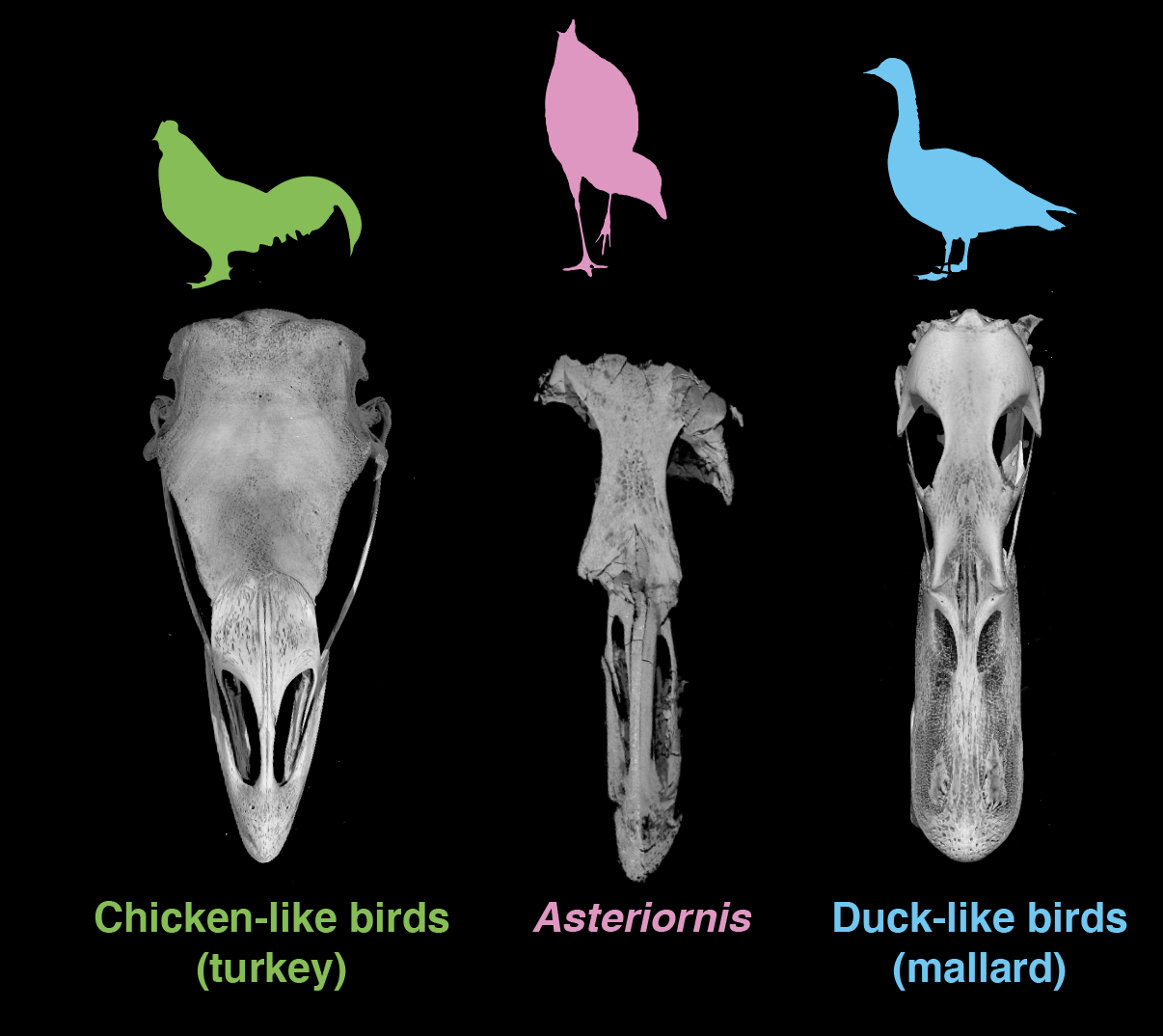
Asteriornis is the first modern bird fossil found from the Age of Dinosaurs in the Northern Hemisphere, suggesting that even older fossil discoveries of modern birds may be made in Europe or North America.
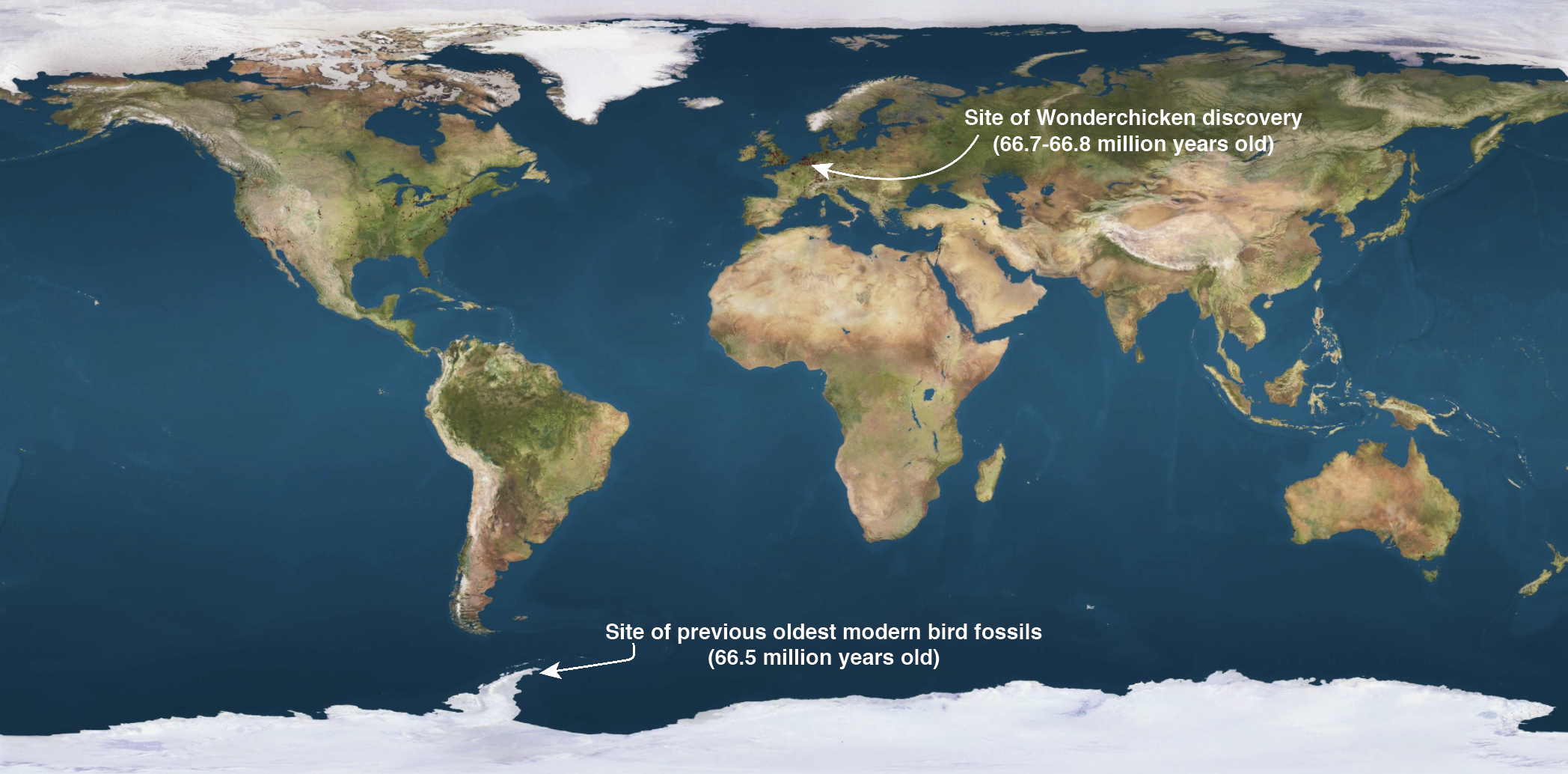
The Wonderchicken is older than the previous oldest modern bird fossil, Vegavis iaai, which was discovered in Antarctica.
The Wonderchicken is older than the previous oldest modern bird fossil, Vegavis iaai, which was discovered in Antarctica.
The Wonderchicken supports previous ideas about features that helped birds survive the asteroid impact. This illustration by Phil Krzeminski shows a hypothetical surviving bird that is small, ground-dwelling, and capable of flight. Wonderchicken shares all of these features as well, helping palaeontologists understand how modern birds made it through this devastating point in Earth history.
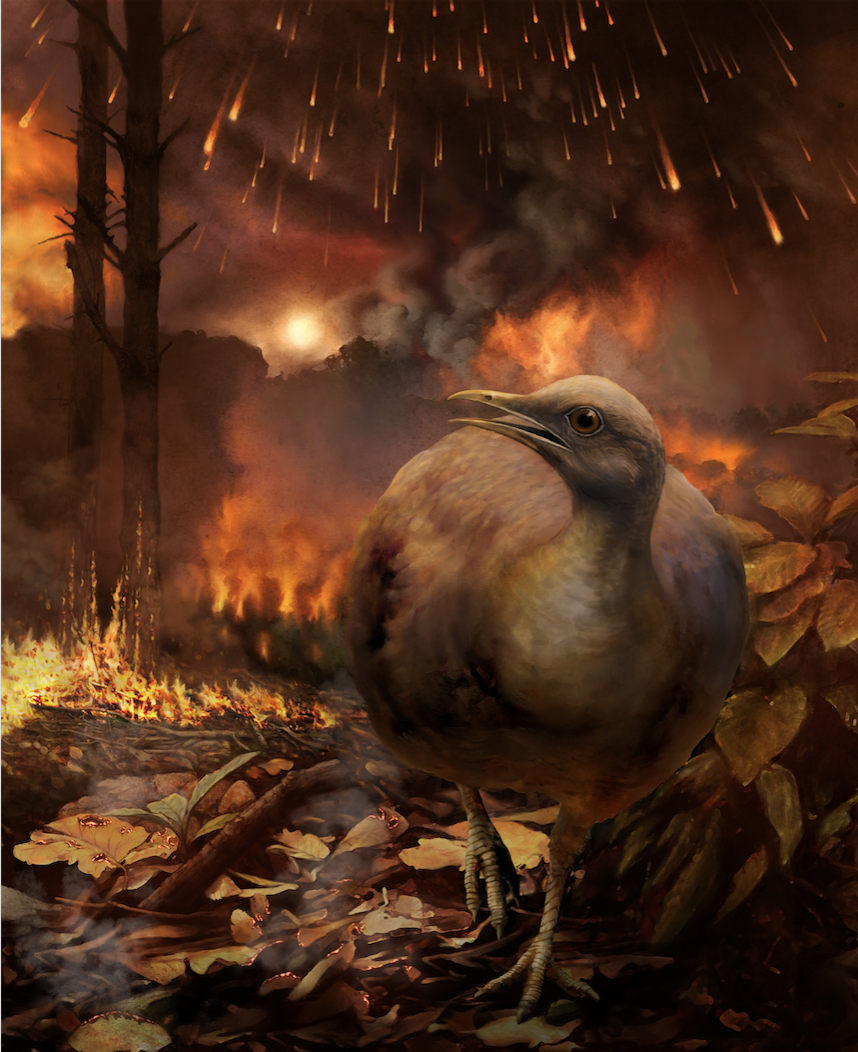
Hypothetical reconstruction of a surviving bird following the end-Cretaceous asteroid impact. © Phillip Krzeminski 2018
Hypothetical reconstruction of a surviving bird following the end-Cretaceous asteroid impact. © Phillip Krzeminski 2018
